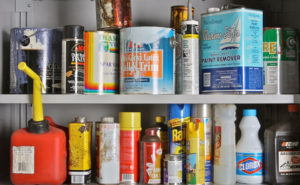 What are VOCs?
What are VOCs?
Volatile organic compounds (VOCs) are chemicals that vaporize and enter the lungs through normal breathing. VOCs are ingredients in paints, cleaning products, and adhesives. Building materials such as carpet, linoleum, composite wood products, and insulation release VOCs. Office equipment including printers, copiers, and fax machines may also release VOCs.
VOCs are chemicals with high vapor pressures and low boiling points. Therefore they vaporize from a liquid or solid under typical atmospheric conditions. Formaldehyde, benzene, toluene, limonene, and hexane are just a few common VOCs.
Regulating VOCs in California
Formaldehyde, the most common VOC, is produced in large quantities worldwide. Manufacturers use formaldehyde to produce wood-binding adhesives and resins. The California Air Resources Board (CARB) investigated formaldehyde exposure in California. CARB discovered that one of a major source of VOC exposure is composite wood products containing urea-formaldehyde resins. The International Agency for Research on Cancer (IARC) classifies formaldehyde as carcinogenic to humans. Formaldehyde is also a respiratory irritant. CARB designated formaldehyde as a toxic air contaminant (TAC) in California in 1992 with no safe level of exposure. State law now requires CARB to reduce human exposure to all TACs.
VOC Product Testing
In 2017, the California Department of Public Health (CDPH) published their latest version of Standard Practice for Testing of VOCs from Various Sources Using Small-scale Environmental Chambers.
The Green building rating systems, standards and codes, including LEED, the International Green Construction Code (IgCC), CalGreen, ASHRAE 189.1 and others reference this CDPH Standard.
EPA Regulation of VOCS
In 2017, the U.S. Environmental Protection Agency (U.S. EPA) regulation to
reduce formaldehyde emissions from composite wood products went into effect.
The compliance date for all regulatory provisions, including the emission standards and labeling requirements, was June 1, 2018.
CARB accepts panels and finished goods, including furniture, cabinets, and flooring, that
comply with the EPA regulation, because the CARB and the EPA formaldehyde-emission standards are identical.